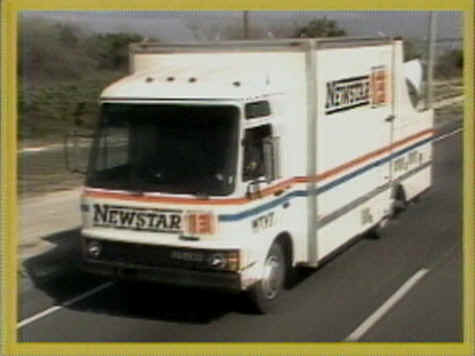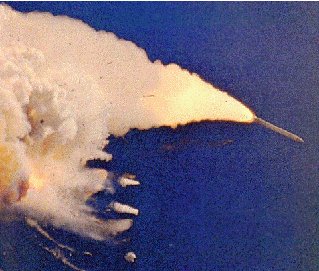
Newstar 1 is on the road!

Newstar 1 is on the road!
Once we got the truck back home and had some time to equip it with
communications gear, editing systems, etc., we began using it regularly. In
fact, the SNG capabilities opened up an entire new format of news-remote
anchoring, which we used extensively in a new newscast: 'First News'.
'First News' came on the drawing boards as an expansion of our news efforts
to the 5pm hour. While there had been some versions of the news earlier than
6pm, we wanted a newscast that was truly unique: a summary of the hard news of
the day without detracting from the established “news of record” broadcast
at 6pm. First News would have some softer elements such as a “Leisure”
segment exploring the Florida lifestyle, a more recreational Sports segment
looking at “consumer” sports such as fishing and bowling, Health news,
Consumer advice and a live, remote, field anchor component that would make it
truly unique.
Alan Wendt, a veteran news reporter and anchor, volunteered, (I think?),
for this new assignment. Traveling to an exotic or at least interesting
The satellite truck brought us a front-row seat to some remarkable news
events. It has been used throughout the years for coverage on the fringes or
outside of the market. It also was one of only two trucks, I recall, at the
I remember it well. January 28, 1986. I was watching the Challenger
launch in my office on the closed-circuit network feed. We had our truck in
place since we were profiling the first teacher in space, Christa
McAuliffe, with our
education reporter, Suzanne Huffman. However, we were not planning to go live
until the noon newscast.
Heretofore,
Pulse 13 had interrupted normal programming to carry every space shuttle launch.
I made the decision not to this time. The launches were becoming so commonplace
and it was only about 20 minutes until the noon news anyway. 'The Price is Right'
would stay on the air.
Like others watching live, we didn’t exactly know what happened when,
73 seconds after launch, it appeared something was not normal. It seemed as if
the solid rocket boosters had separated from the launch vehicle prematurely. But
we knew little more than what we were seeing. I ran into the newsroom and
shouted to Leslie Spencer, the noon anchor, to get on the set. “Something is
wrong with the Challenger” I shouted as I ran to the control room.

Channel 13 provided live SNG coverage of
the Challenger disaster
We interrupted programming even before CBS did. We replayed the launch
just moments earlier and then joined the network coverage as it soon became
available. After a few minutes we had established a link with Suzanne at
the
Then, we began making plans for coverage for the rest of the day. We sent several more staff
members via helicopter to the Cape, including some of our anchors, to field anchor our coverage from the site. This event put our crews and
the technology to the test. With the presence of our SNG truck, our coverage was
second to none. Though, it was a story none of us would have wished to cover.
SNG is now commonplace and new technology has challenged it. In the 2003 Iraqi
invasion we saw an example of moving SNG capability through NBC’s David Bloom’s
coverage. We’ve seen the development and deployment of satellite video phones.
And there’s a new technology of COFDM transmission that will make live shots
available through walls and other areas that are not line-of-sight.